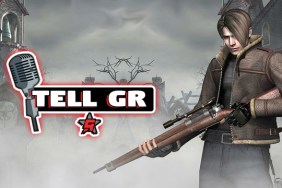Let go of my Ego.
Impatience. That’s why traditional turn-based JRPGs are dying. People, and by that I mean most “gamers”, don’t seem to have any time anymore. They want everything now, to experience every last emotional high and low in a ten-minute hand job with the controller. If twenty seconds goes by without something exploding, someone or something being slashed/punched/shotgunned/teabagged, or some part of the screen spinning into a kaleidoscopic vortex of Technicolor accompanied by a swirl of Dolby Digital surround sound… they get bored. So it’s no wonder that both western and eastern RPGs are becoming “action RPGs" which, though generally getting the best of both worlds, have seemingly abandoned their roots.
[image1]Ranting about how mainstream games have devolved into instant grati-crack is admittedly a lost cause and tangential to the review at hand, but if any game could inspire such a rant, it’s Shin Megami Tensei: Persona 4. For despite its undeniable brilliance, Persona 4 is and will always be a critic’s darling. Like Psychonauts, it has received little exposure in America and has almost everything going against it selling well. It has a nearly unknown publisher and developer (Atlus); it’s a JRPG (emphasis on the ‘J’) which means there are few copies around and any copies that do exist are commonly looked at with a slanted question mark; it’s $40 for the soon-to-be-shelved PS2 – that’s $40 that can be used towards a new next-gen title; and it’s been released late in the calendar year, so not only will other already hyped titles conquer holiday sales, but some critics might even skip over Persona 4 in their end-of-the-year awards.
But not GR. I’m not letting that happen. The Persona series is one of the best, if not the best, series that Shin Megami Tensei has to offer… no, actually, that gaming has to offer, and Persona 4 is no exception. It highlights everything the series is known for – turning daily Japanese school life into a motivating, unpretentious journey, seamlessly integrating metaphysical, psychological, and religious concepts into the story and the challenging combat system, and weaving in realistic characters that you’ll actually care about.
With your parents away overseas, you have moved from the city to the small rural town Inaba under the care of your harried, rough-and-tumble, jacket-held-over-his-shoulder uncle Detective Ryotaro Dojima, and his young daughter, Nanako, who is often left to do the housework and cooking while her father is away solving cases. Not long after you get accustomed to your suburban surroundings and your school – teachers, classmates, clubs, and all – a murder mystery begins to surface. Every morning after a foggy night, the mist parts to reveal a dead body, dangling high and upside-down on a telephone wire or antenna.
Meanwhile, upon hearing rumors about the Midnight Channel, a blurry image that appears on TV for a few seconds at midnight on a foggy night and unusually reveals the silhouette of the next victim, you decide to watch it. And with your curiosity getting the best of you, you decide to press your hand against the screen and it goes through. During your brief travels in TV World, you soon discover your Persona, Izanagi, a manifestation of your controlled ego in this new alternate world that can be summoned to cast magic and that strengthens your abilities to fight off any rampant shadows that might want to tear your limbs off. But just how does the Midnight Channel relate to the murders?
[image2]To unravel this whodunnit mystery, let alone figure out what on earth TV World is, you must manage the most important resource in the game: time. Like Persona 3, you have a limited number of in-game days (from April 11th to December 25th) to get everything done, balanced between your social life and your warrior life. Both sides are important to nurture, whether that means advancing the main storyline by rescuing victims who have been thrown into TV World, battling shadows and leveling up, forming Social Links with your party members and specific townspeople to boost the power of any Personas you fuse in the Velvet Room, or just eating out or playing with a cat to advance your personal stats such as Courage, Knowledge, and Understanding. The only annoyance comes in the form of required investigation in the real world (pressing ‘X’ near every person in every area for several days) just to unlock the whereabouts of a dungeon in TV World.
Though none of the side activities are forced on you, you actually want to do them. There’s little stopping you from going back to your house after school and immediately falling asleep, refusing to build any of your stats or social links. Still, that’s an incredible waste of time and even if you have a mild interest in character development, the relationships you form have meaning and grow naturally. At first, you’ll likely start chatting with your party members – or the mother at the daycare center, the younger brother of one of the murdered victims, the rickety old women by the pier – out of curiosity or just to power up your and your teammates’ Personas selfishly. But eventually, you’ll wish you could spend more time with each person you meet, seeing how you’ve changed them, and in turn, changed yourself.
Maxing out your social links gives all Personas organized in a specific tarot arcana a substantial amount of extra experience and gives you the ability to fuse an extremely powerful, high-level Persona, which is a clever way of turning what would have been just an optional side-story into a tangible, meaningful reward. This design is not restricted to Persona 4 but extends to the series at large – the canny concept of defining worldly gods and goddesses, myths and legends, as entities of your ego that are fittingly summoned by another “persona” of yourself, your avatar. Persona 4 magnifies the idea of representing the many sides of personality as personifications of power, as a step on the path of the human journey. The transformation of your and your teammates’ Personas and the use of tarot cards, from your first social link represented by “The Fool” to the last social link represented by “Judgment”, symbolizes the full circle of the story – and you will feel all the more moved because of it.
Not surprisingly, Persona 4 takes a lot of cues from Persona 3, taking a slice off the shoot-yourself-in-the-head motif and improving on its combat system, graphics, and sound. While exploring the randomly generated dungeons in TV World, crafted out of the suppressed “shadow” feelings of the victim, you will find treasure chests at the end of hallways and you will need to attack shadows before they chase you down. Reaching the boss levels in the dungeon requires you to be intelligent about your resources and items, pinpointing your enemy’s weakpoints for extra turns, and reserving SP for healing. Fortunately this time around, you have the option of disabling the AI bots for your teammates and controlling them as you would yourself.
[image3]For the PS2, the cel-shaded characters and environments are well-done, mirroring the quality of the artwork of its animé inspiration. There’s a decent variety of areas to explore if you include the dungeons, especially compared to the one dungeon tower in Persona 3, but most of your days are spent shuffling your feet through the same five areas. Of course, it makes sense since Inaba is a small town in the middle of nowhere (and remember how boring school was?). Still, a few more areas would have been appreciated, particularly since there are numerous cut-scenes that are in the city, the hospital, the hill overlooking the town, and other places near Inaba that are left un-explorable.
The music and a flawless voiceover cast complement the rhythm and style of the game perfectly. I’m not sure how Shoji Meguro did it, but the soundtrack despite being saturated in J-Pop (just saying the word conjures up one too many Final Fantasy montages – and I refuse to link to one) is spectacular. It has a generally casual and relaxing yet charming and upbeat flavor that makes doing daily tasks a breeze, while the absence of it during foggy, rainy days make them that much more ominous.
The one major caveat with Persona 4 is that it recycles monsters in different dungeons with rather meaningless changes like, say, having a different weakpoint or a different color scheme. This standard practice is usually forgivable, especially given the attention to detail nearly everywhere else in the game, but the sin is greater here since more than half of the monsters have been copied and pasted from Persona 3 without any changes. The “True Ending” – that is, the hidden “better” alternate ending – also borrows heavily from the best ending of Persona 3 in how the final battle resolves itself. It’s almost a page-by-page replay that needlessly blemishes the originality of the story.
Shin Megami Tensei: Persona 4 is one of those rare games that have such a nonchalant, organic, and artful message about humanity that it feels improper to dissect and analyze each of its parts without recognizing the strength of its narrative sum. It shows that a game doesn’t need nonstop, high-flyin’ action or an epic “save the world” theme for it to have lasting impact and purpose. A well-executed mystery with believable high school students and paranormal twists coupled with a challenging but uncomplicated combat system is enough to captivate players for more than eighty hours. Though Persona 4 may not be commercially successful, it reminds us that there are experiences that only traditional turn-based RPGs and the patient diligence it demands can convey; it is a genre that should not be shunted to the shadows but be re-accepted as a trusted Persona of gaming whose power should not be dismissed or forgotten.
-
Art. Period.
-
Intriguing whodunit mystery
-
Mythological and psychological symbolism
-
True-to-life characters
-
Spirited soundtrack
-
Simple but challenging combat system
-
Having control over all characters
-
Not many town areas to explore
-
Persona 3.8?










